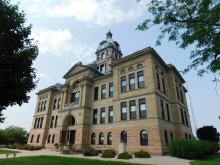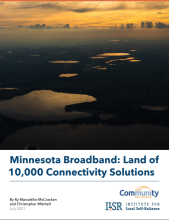Vinton, Iowa’s Municipal Fiber Utility Hits 1,000 Subscriber Mark
Vinton, Iowa’s municipal communications utility, iVinton, connected its 1,000th subscriber with high-speed fiber optic Internet service this week.
Demand for fiber-to-the-home (FTTH) connectivity across the 4.74-square-mile Iowa community (est. pop. 5,100) is so substantial that iVinton, governed by the Vinton Municipal Electric Utility (VMEU), is having to schedule installations a month out as requests for residential service have surpassed the manpower available to complete them as quickly as they had hoped.
As the telecommunications utility transitions out of its start-up phase – from working with external consultants to bringing all operations in house and limiting outside vendors – the biggest challenge iVinton has had to overcome is not having enough employees to take on the necessary roles, Matt Storm, iVinton’s Municipal Communications Manager, told ILSR in a recent interview.
Still, the utility is plugging away to keep up with requests for residential installations as iVinton is eager to meet the surge in demand. “We’re supplying a service that’s needed for the community, and the community has responded,” Storm told ILSR.
Just over a year into the municipal fiber network being operational, 1,000 of 2,450 residential and business premises, or 41 percent of the available premises in Vinton have made the switch. They've been lured by increased bandwidth, a higher quality of service, and the benefit of iVinton being a local provider with service technicians in town. Today, iVinton offers three symmetrical speed tiers to residents: 100 Megabit per second (Mbps), 250 Mbps, and 1000 Mbps connections for $70, $90, and $120 per month respectively.



